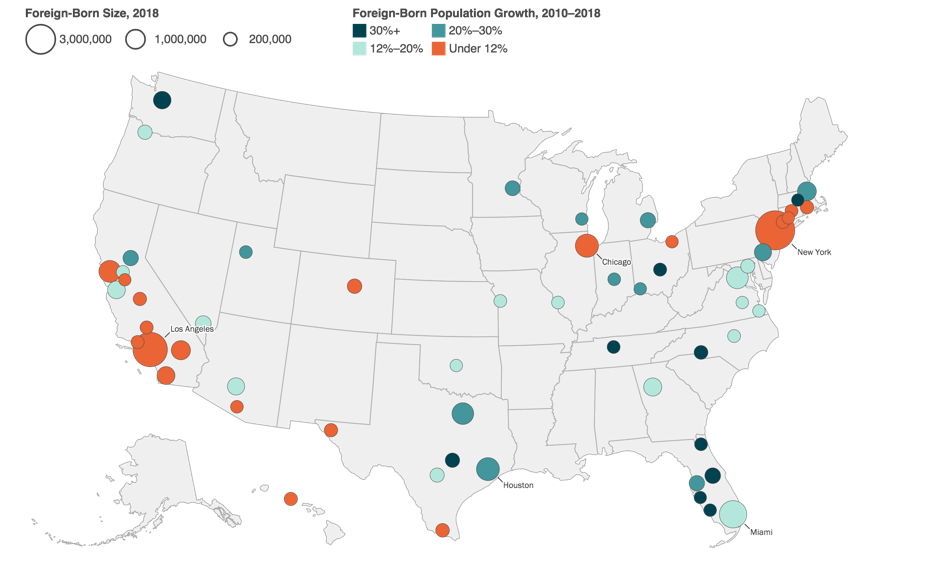 Posted Oct 16, 2019, 4:54 PM
Posted Oct 16, 2019, 4:54 PM
|
 |
Registered User
|
|
Join Date: Aug 2002
Location: Toronto
Posts: 52,200
|
|
The New Geography of American Immigration
https://www.citylab.com/life/2019/10...h-data/599884/
Quote:
.....
- America’s foreign-born population grew by slightly more than 200,000 people in 2017-18, the smallest increase yet since 2010. In other years this decade, the foreign-born population increased by more than twice that amount; in 2013-14, it grew by more than 1 million people, or roughly five times the 2017-18 increase. — Despite this recent slowing of growth, America’s total foreign-born population stands at an all-time high of close to 45 million. That’s 13.7 percent of all the people in the United States—a share that’s about one percentage point lower than the all-time high of 14.7 percent, back in 1910, reflecting the great immigration wave of the late 19th and early 20th centuries.
- Metros in the South and Rust Belt saw the biggest gains, while some large coastal metros on the East Coast, plus the San Francisco Bay Area, Los Angeles, and Chicago, saw considerable declines. — Immigration has become more Asian and less Hispanic, as well. Latin Americans represented the lion’s share of new U.S. immigrants before 2010, but since then, the share of Asians has risen. — Despite the shift to more highly educated adult immigrants, America continues to see significant declines in international students coming to its universities and colleges. Immigrants make up a disproportionate share of leading scientists and founders of high-tech companies. Current and future generations of such foreign-born talent are either staying at home or choosing more open countries.
.....
|

__________________
ASDFGHJK
|



